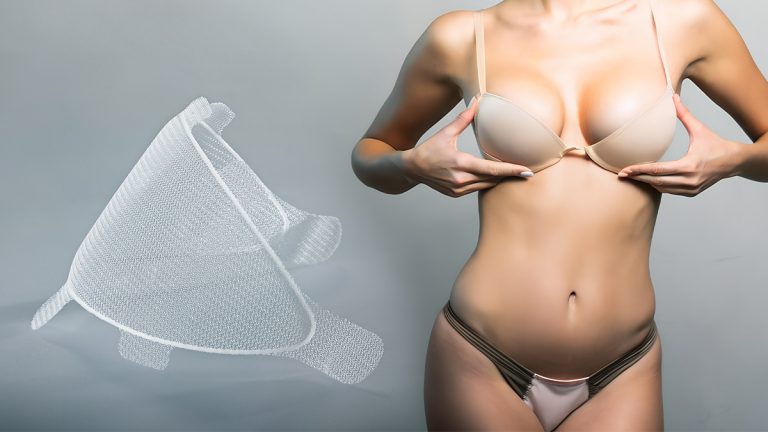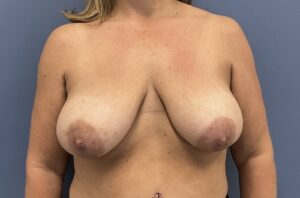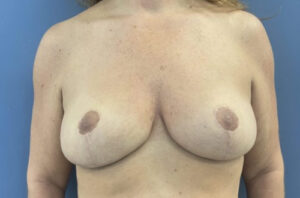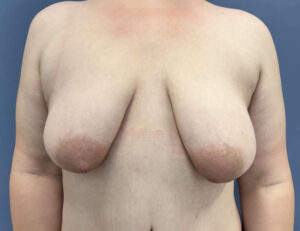
Over time, gravity, weight fluctuations, pregnancy, and the natural aging process can cause breasts to lose their firmness and youthful position. Even with the healthiest lifestyle, many women experience sagging, deflation, or imbalance in their breast shape.
Breast lift surgery, also known as mastopexy, remains one of the most effective procedures for restoring a more youthful, uplifted contour. However, maintaining those results long-term can be a challenge, especially for patients with thinner skin, poor tissue support, or a history of prior surgeries.
To address this, Dr. Glenn Lyle, a board-certified plastic surgeon in Raleigh, NC, offers mesh support during mastopexy as a specialized technique for select patients. This advanced approach provides internal reinforcement to the breast structure, helping to preserve the lifted shape and improve the longevity of results.
This article explores the purpose of mesh support, how it works, and why it may be a valuable option for patients seeking long-term improvement in breast aesthetics.
What Is a Breast Lift?
A breast lift is a surgical procedure designed to raise and reshape sagging breasts. The surgery involves removing excess skin, tightening surrounding tissue, and repositioning the nipple to a higher, more youthful location.
Mastopexy can correct breasts that have lost volume and firmness due to pregnancy, breastfeeding, aging, or significant weight loss. The procedure does not add size but improves projection, shape, and symmetry. It can also be combined with implants for patients who want both lift and volume.
While a breast lift delivers a dramatic transformation, results can gradually change over time. Tissue quality, skin elasticity, and lifestyle factors all influence how long the outcome lasts. For some patients, breasts may begin to sag again sooner than expected.
Why Do Breasts Sag After Surgery?

Recurrent ptosis (sagging) often begins in the lower portion of the breast. This is where support is most critical and where traditional mastopexy alone may not provide enough internal strength to resist stretching.
To address this concern, plastic surgeons are increasingly turning to mesh support as an added layer of stability. By reinforcing the breast from within, mesh helps maintain the elevated contour and reduces the risk of early drooping.
What Is Mesh Support in Mastopexy?
Mesh support involves the placement of a soft, absorbable surgical scaffold within the breast during a lift procedure. This mesh acts like an internal bra, providing structural reinforcement during the healing process and beyond.
The mesh is carefully positioned under the lower portion of the breast, where most of the tension and sagging typically occur. Over time, the body naturally absorbs the mesh, replacing it with collagen-rich tissue that supports the new shape.
This technique does not alter the appearance of external scars or require additional incisions. It is fully internal and integrated into the existing surgical plan.
Dr. Glenn Lyle incorporates mesh support into mastopexy procedures for qualified patients who want to improve the long-term stability of their results. His Raleigh, NC practice is one of the few in the region offering this advanced technique.
Breast Lift Before and After Photos




Breast Lift Procedure Page Breast Lift Gallery
Who Is a Good Candidate for Mesh Support?
Mesh support is not required for every breast lift, but it offers specific benefits for patients in the following situations:
- Women with thin, weakened, or overstretched breast skin
- Patients who have lost a significant amount of weight
- Women combining a breast lift with implants (augmentation-mastopexy)
- Patients undergoing revision surgery after previous procedures
- Anyone concerned about long-term sagging or loss of shape
These patients often benefit from added internal support to help maintain the lifted breast contour over time. By reinforcing the lower pole of the breast, mesh can help reduce tension on the skin and improve surgical durability.
Dr. Glenn Lyle carefully evaluates each patient’s anatomy, tissue quality, and aesthetic goals to determine whether mesh support is appropriate. His personalized approach ensures the best possible outcome tailored to the individual.
Types of Surgical Mesh: GalaFLEX and DuraSorb
At his Raleigh practice, Dr. Glenn Lyle uses two FDA-cleared mesh products based on patient needs: GalaFLEX and DuraSorb.
GalaFLEX
GalaFLEX is a bioresorbable mesh made from poly-4-hydroxybutyrate (P4HB). It remains in the body for approximately 18 to 24 months before being completely absorbed.
This mesh is strong and durable, making it ideal for patients with compromised tissue support or significant sagging. As the mesh dissolves, it is replaced by the patient’s own connective tissue, creating a stable internal framework.
DuraSorb
DuraSorb is a lightweight, absorbable mesh that dissolves more quickly, typically within 6 to 12 months. It is suitable for patients with less severe tissue weakness or thinner frames.
Because it offers temporary support during the most critical phases of healing, DuraSorb is ideal for patients seeking a more subtle reinforcement without long-term presence.
Both mesh options are completely absorbable, do not remain in the body permanently, and are selected based on individual needs and safety considerations.
What to Expect During and After Surgery
When mesh support is used, it is integrated seamlessly into the breast lift procedure. The mesh is placed internally and does not change the external incision pattern or healing time in most cases.
Patients can expect a similar recovery timeline as with a traditional breast lift:
- Mild to moderate swelling and tightness for the first few weeks
- Return to light activities within 1 to 2 weeks
- Use of surgical bras and compression garments as directed
- Full healing and shape stabilization over several months
The mesh provides support as the tissue heals, then gradually dissolves, leaving behind strengthened natural tissue that helps hold the new breast contour.
Dr. Glenn Lyle and his team provide detailed post-operative instructions, regular follow-up visits, and support throughout the recovery process. This ensures optimal healing and long-term satisfaction.
Frequently Asked Questions
What’s the difference between GalaFLEX and DuraSorb mesh?
GalaFLEX lasts longer and is absorbed over 18 to 24 months. It is ideal for patients with weaker tissue. DuraSorb dissolves more quickly, usually within 6 to 12 months, and is often chosen for patients who need lighter support.
How do I know which mesh is right for me, GalaFLEX or DuraSorb?
Dr. Glenn Lyle selects the mesh based on your skin elasticity, breast volume, and overall surgical plan. Some patients benefit from longer-lasting internal support, while others do well with a faster-absorbing scaffold.
Is GalaFLEX too strong or bulky for small breasts?
No. GalaFLEX is available in different sizes and can be trimmed to fit the breast precisely. It provides discreet internal support without creating visible fullness. Galaflex also makes a lighter mesh ( like DuraSorb) for thinner skinned patients.
Does DuraSorb break down too quickly to be effective?
No. DuraSorb is designed to support the tissue during the most important phase of healing. By the time it dissolves, your body has already developed a natural layer of internal support. Depending on the need or indication- DuraSorb may not be used for conditions requiring stronger support.
Can mesh be reused if I have another surgery in the future?
No. Once mesh is absorbed, it cannot be reused. If revision surgery is performed later, a new mesh can be placed if necessary.
Does mesh reduce the risk of bottoming out after augmentation-mastopexy?
Yes. Mesh helps stabilize the lower part of the breast and reduces the downward pull of implants or natural tissue over time.
Will GalaFLEX or DuraSorb make my recovery longer or more painful?
Recovery is similar to that of a standard breast lift. Most patients report only minor added tightness, and discomfort is well managed with medication and rest.
Is mesh considered safe for long-term breast health?
Yes. GalaFLEX and DuraSorb are both FDA-cleared and widely used in cosmetic and reconstructive breast surgery. They are safely absorbed by the body and replaced with healthy tissue.
Can mesh support help avoid revision surgery in the future?
Mesh can improve shape retention and lower the chance of early sagging or implant displacement. While it doesn’t eliminate the possibility of future revision, it can significantly reduce the need for one.
Are there any visible signs on the outside of the breast that mesh was used?
No. Mesh is placed internally and does not affect the skin or external scars. Once healing is complete, there are no visual indicators that mesh was used.
Medical References
GalaFLEX lasts longer and is absorbed over 18 to 24 months. It is ideal for patients with weaker tissue. DuraSorb dissolves more quickly, usually within 6 to 12 months, and is often chosen for patients who need lighter support.
Dr. Glenn Lyle selects the mesh based on your skin elasticity, breast volume, and overall surgical plan. Some patients benefit from longer-lasting internal support, while others do well with a faster-absorbing scaffold.
No. GalaFLEX is available in different sizes and can be trimmed to fit the breast precisely. It provides discreet internal support without creating visible fullness. Galaflex also makes a lighter mesh ( like DuraSorb) for thinner skinned patients.
No. DuraSorb is designed to support the tissue during the most important phase of healing. By the time it dissolves, your body has already developed a natural layer of internal support. Depending on the need or indication- DuraSorb may not be used for conditions requiring stronger support.
No. Once mesh is absorbed, it cannot be reused. If revision surgery is performed later, a new mesh can be placed if necessary.
Yes. Mesh helps stabilize the lower part of the breast and reduces the downward pull of implants or natural tissue over time.
Recovery is similar to that of a standard breast lift. Most patients report only minor added tightness, and discomfort is well managed with medication and rest.
Yes. GalaFLEX and DuraSorb are both FDA-cleared and widely used in cosmetic and reconstructive breast surgery. They are safely absorbed by the body and replaced with healthy tissue.
Mesh can improve shape retention and lower the chance of early sagging or implant displacement. While it doesn’t eliminate the possibility of future revision, it can significantly reduce the need for one.
No. Mesh is placed internally and does not affect the skin or external scars. Once healing is complete, there are no visual indicators that mesh was used.
- A systematic review of mesh support of the breast in aesthetic breast surgery
- The History of GalaFLEX P4HB Scaffold
- Bioabsorbable Polydioxanone Mesh for Soft Tissue Reinforcement in Revisional Breast Surgery
Why Patients Choose Dr. Glenn Lyle for Breast Lifts in Raleigh
Dr. Glenn Lyle is known throughout Raleigh, NC, and the surrounding region for his surgical precision, natural aesthetic results, and patient-centered care.
As a board-certified plastic surgeon with more than 30 years of experience, Dr. Lyle has performed hundreds of breast lifts and revision procedures. His surgical approach focuses on creating proportionate, balanced outcomes that reflect each patient’s unique anatomy and goals.
He is one of the few plastic surgeons in North Carolina offering mesh-supported mastopexy and has extensive experience with both GalaFLEX and DuraSorb scaffolds. His commitment to innovation and patient safety allows him to deliver beautiful results that last.
Patients trust Dr. Lyle for his honest advice, attention to detail, and personalized care at every step.
Is Mesh Support Right for You?
For women concerned about drooping or recurrent sagging after a breast lift, mesh support may provide a valuable solution. It is especially helpful for those who have already experienced loss of shape after previous surgery or who require additional internal structure for long-term support.
The decision to include mesh in a mastopexy procedure is highly individualized. During a consultation, Dr. Glenn Lyle will assess the patient’s skin quality, tissue strength, and surgical goals before recommending the best course of action.
While mesh support is not necessary for everyone, it can be a game-changer for patients who want more durable, natural-looking results.
Take the Next Step: Schedule a Consultation with Dr. Glenn Lyle
If you are considering a breast lift and want to explore the most advanced techniques available, a consultation with Dr. Glenn Lyle is the best place to start.
At his private practice in Raleigh, NC, Dr. Lyle offers a welcoming environment where patients can learn about their options, ask questions, and receive a surgical plan tailored to their needs.
To learn more about mesh-supported mastopexy or schedule your personalized consultation, visit:
https://drglennlyle.com
Discover how the right support can make all the difference in achieving beautiful, long-lasting results.
Further Reading
- Read Dr Glenn Lyle’s Breast Lift Procedure
- Read Dr Glenn Lyle’s Breast Augmentation + Lift in Raleigh, NC
- Read Dr Glenn Lyle’s Blog about How to Minimize Breast Lift Scars
- Read Dr Glenn Lyle’s Blog about Considering a Breast Lift After Taking Weight Loss Medication?
- Read Dr Glenn Lyle’s Blog about Causes and Solutions for Droopy Breasts


